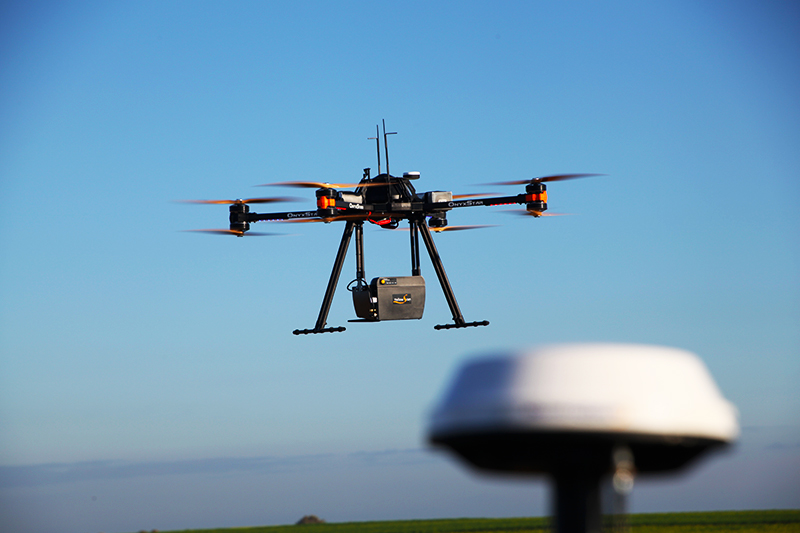In my last post, I asked whether anyone with a UAV can call themselves an aerial surveyor. Since publication it became apparent that we should provide some clarification to the terminologies that we are using—including professional certification and licensing—we have updated the piece to reflect this.
Whatever the case, it is clear that UAV imaging operations require a professional approach. That is especially true in the implementation of the imaging technologies and methodologies you choose. That’s why this week I would like to argue that we shouldn’t assume UAV operations enable cheaper surveys. I would also like to make the case that UAVs can still the best tool for the project, as long as you account for the real cost.
First, the upfront costs that make UAVs more expensive than you think.
Upfront Costs
The capital cost of UAV equipment is certainly lower than that of manned aircraft, but professional UAV flight operations do cost money.
While a pilot is not required on the plane itself, UAV flight operations still require a minimum of two members of staff to be mobilized and catered for on site. UAV operations require time for risk analyses and planning prior to flight. A professional flight operator needs to invest in and carry the correct insurance and certifications. An often-overlooked cost on UAV survey projects is the time required to plan and survey a ground-control framework on the site to ensure the data is delivered to the agreed specification.
The UAV solution is not always cheaper. Experienced aerial survey providers have explained to me that they have costed out projects they really thought would be suitable for UAV operations, only to find that to use their regular aircraft would be cheaper.
And that’s before accounting for the hidden costs of proper UAV usage.
Hidden Costs
After accounting for the overhead of professional operations, one must give careful thought to whether the project is of a suitable type or size to be efficiently achieved using UAV data collection methods—or whether manned aircraft are more appropriate.
There are situations where UAVs may still be the best option, but its important to note that they require expertise, which brings even more costs.
Your Site is Inaccessible
If a survey of a site is essential, but is either accessible or problematic for health and safety reasons, UAV deployment can be ideal—regardless of what size the site is. Even if that site is small though, do not necessarily expect the project to be delivered at a lower cost.
Hidden Costs: You will have to pay for operations, and ensure your team has the proper training and expertise.
You Want Dense Topographical Data
If slope angles need to be calculated or benchmarks collected for a topographic survey, the conventional method is a walking survey using GPS receivers. The advantage of a GPS survey is that each individual data point collected is measured to a very high accuracy. It is usually impractical, though, to collect data points at a very high resolution (every 1-10cm?) across the landscape. This means that there could be large amounts of information lost.
Though an orthophoto product or a point cloud taken from a UAV might not provide the same degree of absolute accuracy as the corresponding points measured by the GPS, they will usually provide a density of information that is much higher across the survey site. Such densities of data could be important on projects such as those that deliver a drainage model for land development.
Hidden Costs: The accuracy of any model is dependent upon the correct application of survey principles. This requires expertise in the project team for efficient survey flight planning and the appropriate use of ground or survey control, and if we consider our mountainous environment again, setting out proper control could likely take longer than usual. UAV projects also require the knowledge of how to equip a UAV to collect data that meet required standards, such as knowing when it is appropriate to equip a UAV with a survey-grade inertial navigation system.
You Want to Capture the Site Frequently
An area where UAV imaging techniques have an advantage over conventional methods of collecting data is the frequency with which they can be deployed. This is why one of the areas of strongest demand for UAVs is volumetric measurement for monitoring pits and stock-piles. Survey considerations are minimal here: Once appropriate survey control has been established for a site, it is relatively straightforward to collect data on same site on a frequent basis.
Hidden Costs: The expertise to treat the data correctly. A spatial scientist or statistician will be able to understand concepts such as the modifiable areal unit problem, and the impact that methodologies for measuring or approximating shapes will have on the volumes calculated.
Since volumetric monitoring projects are frequently used to provide mines or industrial facilities with numbers for production or wastage reports, it is essential that a service provider is able to understand the implications of how they have calculated those volumes. Most importantly, service providers must understand how to identify and correct errors in their methodology before the implications cost their end customer further.
Next Week
So, if you shouldn’t focus on cost when considering a UAV survey method, or simply expect a UAV-method to be cheaper, then what should you consider when deciding whether UAVs are right for you? This will be for the final installment next week.









